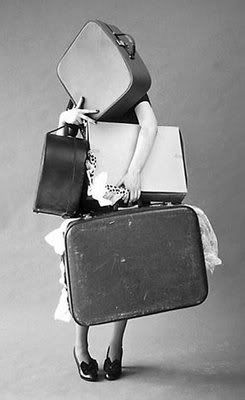7 Common Air Travel Issues and How to Solve Them
If you have flown more than once then you have probably experienced at least one of the following: delayed flights, lost bags, and customer complaints. According to a recent study things thing are on the rise, In continuing with our travel tips and tricks, here is an article found in Real Simple where experts explain how you can resolve some of these sticky air travel problems—and, even better, how you can totally avoid them.
1. You missed your connecting flight.
If you book all of your flights through one airline, there’s a better chance that airline will accommodate you, says Regis St. Louis, coordinating author of Lonely Planet USA. When it comes to rebooking your flight, “never stand on line—ever,” says Peter Greenberg, travel editor for CBS News. If there is no line at the ticket counter, approach the attendant to see if you can get on the next flight (even if you just get on standby). If the ticket counter is crowded, call the airline’s 1-800 number.
If you were on the last flight of the day and the airline was responsible for the delay—a mechanical or staffing issue, for example—you’re in a better position to receive compensation for a hotel room and get on the first flight out the next day, says Greenberg. Grounded due to a storm? Sorry: “If weather was involved, all bets are off and you’re on your own,” he says.
© Wavebreakmediamicro | Dreamstime.com – Departures List On Black Mechanical Board Photo
2 . Your trip was cut short due to a family emergency.
If you have travel insurance, some of your expenses may be covered—though the cost of purchasing insurance might only be worth it if your ticket is relatively expensive, says Greenberg. Otherwise, the expense may outweigh the benefit. If a situation arises that requires unexpected travel, St. Louis suggests calling the airline to explain the situation. Whether or not to accommodate changes is often up to their discretion, he says.
3. Your bags are lost.
If your bags end up lost, don’t panic: “Generally airlines are pretty good about getting your bags to you very quickly. It’s rare that your bags will disappear never to return,” says St. Louis. First, go to the customer service counter to report your bags missing and make sure to get a receipt or something tangible that says they are looking for the bags, he says. Inquire about how your bags will be returned to you—some airlines will deliver your bags to your final destination and others will not. If your bags are missing for a number of days, some airlines will also give you money towards a new wardrobe, says Pauline Frommer, editorial director for Frommer’s guidebooks and Frommers.com.
To avoid this sticky situation in the future, both Frommer and St. Louis recommend not checking a bag if at all possible. If you do decide to send your bags through, make sure they’re marked in several places, says Frommer. In addition to identifying tags on the outside of your bag, “it’s good to have a little slip of paper inside with your ticket number, name, and address, and your cell phone number,” she says. Another helpful hint: When connecting flights, ask the agent at your connecting gate to scan your checked luggage receipt to see if your bags made the flight, says Greenberg. “If your bags didn’t make your flight, you can start the lost and found process then—not hours later when you arrive at your destination.”
4. You forgot your identification.
Always double and triple check that you have your identification on you—especially a passport for international travel—before leaving the house. In the event you’re traveling domestically and leave your ID behind, “TSA has come up with some creative ways to get you through security,” says Greenberg. “A credit card, a checkbook with your name on it, even your cell phone may contain enough information to confirm that it’s you.” But for international travel, “no passport, no flight,” says Greenberg.
Take a photograph of your ID or passport and have it on your phone in case you lose your ID or forget it, says St. Louis. It’s up to the airlines whether or not they’ll let you on the flight, but it may help—especially if you have to replace your passport at a consulate.
5. You’re bumped from a flight.
“It’s rare that you’d be bumped from a flight without being informed, unless you’re running really late and don’t make it to the gate in time,” says St. Louis. In other countries there might be different requirements, so you’ll want to check the carrier’s rules and regulations, he adds. If you do get bumped from a flight for some reason, do not accept miles or vouchers, which can be difficult to redeem, says Frommer: “Ask for cold hard cash.”
6. You’re traveling with young kids, but can’t get seats together.
“The key is to speak up,” says St. Louis. “Be proactive and try to find an ally.” Ask the ticket counter for help before boarding. If they can’t help you, the flight attendant on the aircraft can help shuffle passengers around to accommodate your family, he says. Remember: “Courtesy and kindness goes a long way.”
7. Your flight is canceled due to bad weather.
If your flight is canceled due to inclement weather, the best course of action is to be persistent, says Frommer: “Keep calling. If you get an answer you do not like, hang up, and either call or email back.” During bad weather, things change quickly and passengers are often shuffled around to accommodate individual travel needs as best as possible, which means a seat that was not available minutes ago may now be available, she explains. And remember to consider alternate airports and other means of transportation if you need to get to your destination immediately. Try rental cars, buses, or trains.










